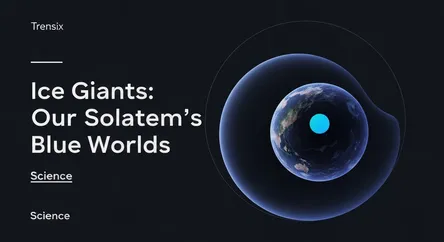Science
Ice Giants: Our Solar System's Blue Worlds

Explore the ice giants, Uranus and Neptune. Discover what these frigid, distant planets are made of and why they are crucial to understanding our universe.
What is it?
An ice giant is a large planet composed mainly of elements heavier than hydrogen and helium, such as oxygen, carbon, nitrogen, and sulfur. Unlike gas giants like Jupiter and Saturn, which are mostly gas, ice giants have a higher proportion of these heavier elements, often referred to as 'ices' in planetary science. Our solar system contains two ice giants: Uranus and Neptune. They consist of a small rocky core surrounded by a massive, slushy mantle of water, ammonia, and methane ice. Above this is a thick atmosphere of hydrogen, helium, and methane gas, with the methane giving them their characteristic blue and cyan colors.
Why is it trending?
Ice giants are trending due to renewed interest from space agencies and stunning new observations from the James Webb Space Telescope (JWST). JWST has provided unprecedentedly clear images of Uranus and Neptune, revealing intricate details about their faint rings, dynamic storms, and atmospheric compositions. Furthermore, scientists are strongly advocating for new dedicated missions, like a Uranus orbiter, because these planets are the least-explored class in our solar system. Understanding their unique tilted axes, bizarre magnetic fields, and formation history is a top priority for planetary science.
How does it affect people?
Studying ice giants directly impacts our understanding of how planetary systems form and evolve. Many exoplanets discovered orbiting other stars are similar in size and mass to Uranus and Neptune, suggesting that ice giants may be one of the most common types of planets in the galaxy. By studying our local examples, we gain a crucial baseline for interpreting data from these distant worlds. This research helps us piece together the puzzle of our own solar system's history and broadens our perspective on the variety of planets that exist beyond it, informing the search for habitable environments elsewhere in the cosmos.